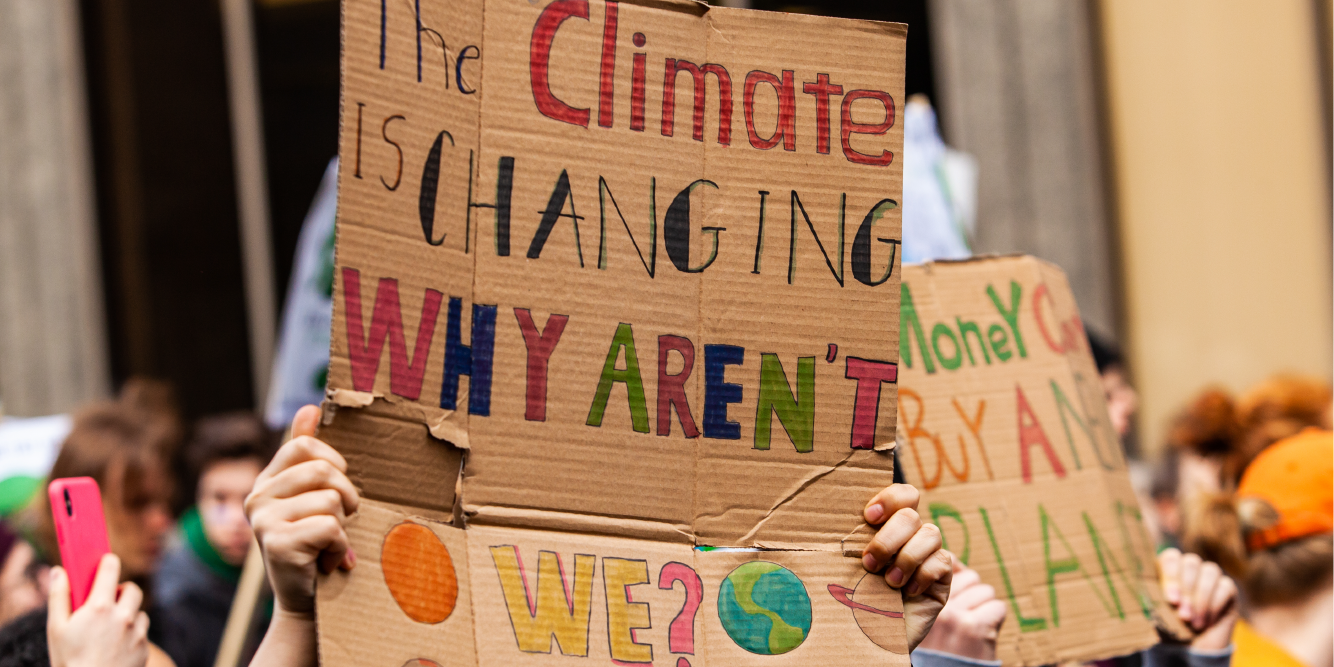Greenhouse Gas Pricing
Not all carbon prices are created equal. A carbon price belongs in the USCAN Vision for Equitable Climate Action only if it meets very stringent requirements:
A carbon price must not be a primary source of revenue for climate funding. There are other, better ways of funding the necessary investments. Carbon pricing revenues will decrease as fossil fuel use declines and will not provide a reliable long-term funding source. In addition, climate action should not be limited by claims that sound policy must be entirely “paid for” “as you go,” by tax increases or other tradeoffs in government budgets. A carbon price should be employed to achieve specific climate policy objectives, including equitable treatment of communities affected by those objectives.
A carbon price should be progressive and must not be regressive. We recognize that even a fee placed at the point of extraction/import would have the effect of increasing the cost of living for consumers in the near term. As a result, a carbon price should be coupled with policies that offset increased costs to economically disadvantaged households and communities assist them in transitioning away from dependence on fossil fuels to cleaner, more affordable options; and benefit communities experiencing historical and present-day exploitation by the fossil fuel industry. Communities hurt by present-day and historical exploitation by the fossil fuel industry must also receive direct long-term health care assistance.
A carbon price must not allow any free permits. A persistent weakness of carbon markets (including California, the Regional Greenhouse Gas Initiative, and the European Emissions Trading System) is that there have been handouts of free allowances. There shouldn’t be any such handouts, period. At the same time, policies must be designed so that carbon prices do not incentivize the leakage of emissions sources to other jurisdictions.
A carbon price must not create pollution hotspots or perpetuate environmental injustice. There is documented evidence that in some jurisdictions that have adopted a carbon price, such as California, polluting industries such as oil refiners have purchased rights to pollute instead of cutting pollution in those communities—disproportionately low-income and people of color—that have borne the greatest historical pollution burden. Any carbon pricing system must contain mechanisms that prevent this from occurring. In practice, this means that carbon pricing should not in any way be seen as an alternative to non-market-based regulations. This is particularly true in communities with severe air quality problems.
A carbon price must in practice cover all greenhouse gas emissions, with the sole exclusion of soil carbon and land-used emissions, as below. The price must cover emissions from all non-fossil-based fuels such as forest biomass and trash, and non-energy emissions such as refrigerants and cement manufacturing. It is imperative that we do not transition to fossil fuel replacements that emit even more greenhouse gases than fossil fuel sources. The pricing mechanisms must cover all methane emissions, including leaked emissions, and methane emissions should be priced based on their greenhouse gas impacts on a 20-year time horizon. All other climate forcers, such as hydrofluorocarbons and black carbon, must also be covered based on their climate impacts.
A carbon price should not be applied to soil carbon, livestock or land-use emissions. Mitigation can and must occur in these sectors, including reducing methane emissions from the livestock sector (especially concentrated feeding operations) and nitrous oxide from the overapplication of fertilizers, both of which have many environmental costs beyond climate change. However, other policy tools will be more effective at driving this mitigation than a price on carbon while also being more responsive to the many justice and equity issues in this sector, including the right to food and the need to support small, independent family farmers. The pricing mechanism should be applied to all fossil energy inputs associated with farming, such as tractor fuel.
A carbon price must be placed at the point of extraction or import. This will help ensure that fossil fuel companies are forced to bear the true cost of fossil fuels and that the price is applied without loopholes or complex, manipulatable schemes that may be difficult to enforce. If companies pass along costs to consumers, the increased cost will still be forced into their business model. This fee at the point of extraction or import should be set to ensure that as consumption of oil decreases, the cost of oil remains high, deterring further extraction and preventing demand growth.
A carbon price must not be enacted outside of a broader policy platform. Putting a price on carbon will not be enough to reduce U.S. emissions at the rate necessary. Any price on carbon must be accompanied by a suite of regulations and investment policies that rapidly transition the economy away from greenhouse gas emissions. In particular, a carbon price addresses the “demand side” by raising the price of fossil energy, but it cannot be effective without simultaneous “supply side” regulations such as a ban on new fossil fuel extraction, exploration, and processing facilities, and a phaseout of existing facilities.
A carbon price must not be a bargaining chip. A carbon price must not be coupled with deregulation, liability limits, or other policies that make it more difficult to mitigate the climate crisis or other environmental harms. A carbon price is a complement to other climate and environmental policies, not a replacement for them.
A carbon price must prevent a drop in fossil fuel prices as their use declines. A carbon price is an important tool to ensure that fossil fuels do not become so inexpensive that low fuel costs create a disincentive for making the transition to zero emission alternatives.
A carbon price must be high and increase over time until we achieve zero emissions. If a carbon price is not high enough, it will not have the desired effect. The IPCC has said that a minimum carbon price in 2030 must be at least $135/ton carbon dioxide equivalent, and in 2050 the price must be $245/ton. A carbon price smaller than these numbers will not be worth enacting. The necessity of a high carbon price underscores the need to ensure that poor and vulnerable populations get a disproportionate rebate to ensure they come out ahead under the new pricing mechanism.
A carbon price must be coupled with strong just transition provisions. When fossil fuel sectors go into decline because of market forces, which will happen if a carbon price is enacted, there is potential for rapid, destabilizing economic shifts in some regions that are dependent on extraction. These shifts affect workers as well as the tax base of local communities. Any carbon price must be accompanied by strong just transition provisions that ensure that workers and communities are not left stranded. An intentionally planned transition always produces more predictable and just outcomes than one left to the whims of market forces.















